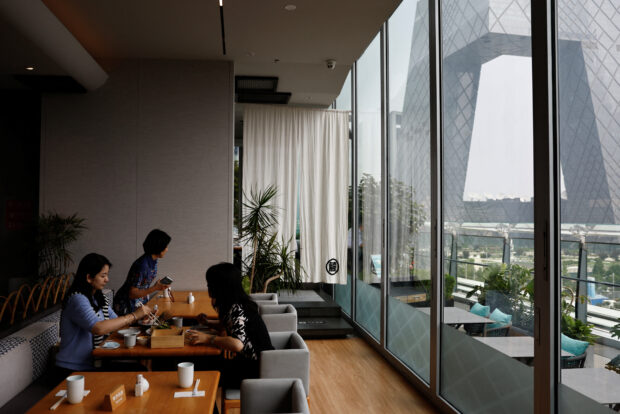
Customers dine at a Japanese restaurant in Beijing, China Sept 7, 2023. REUTERS/Tingshu Wang/file photo
BEIJING – China’s services activity grew at a slower pace in February, with business confidence moderating for the second month and firms trimming staff numbers for the first time since November, a private-sector survey showed on Tuesday.
The Caixin/S&P Global services purchasing managers’ index (PMI) edged down to 52.5 from 52.7 in January, but was still above the 50-mark that separates expansion from contraction for the 14th consecutive month.
The outcome is in contrast to an official survey last week which showed services activity expanded at a faster pace, providing a mixed picture of conditions in a vital sector of the economy. Authorities are counting on services to pick up the slack of the manufacturing sector as it struggles to motor on amid slow global demand.
READ: China’s Dec services activity expands at quickest pace in five months
Foreign demand picking up
Despite robust activity during the eight-day Lunar New Year holidays, the expansion rate of new business was little-changed from January, the Caixin survey showed.
READ: China’s travel spending during Lunar New Year holidays surged
On the brighter side, foreign demand was the most pronounced since June last year amid reports of firmer customer orders across external markets.
However, outstanding business fell for the first time since July 2022 and payroll numbers across the services sector dropped in February after expanding marginally in the prior two months.
That explains why business confidence slipped to a four-month low in February, with some companies being more cautious around forecasts due to relatively subdued market conditions and expectations that client spending may remain muted.
Post-COVID rebound
The world’s second-biggest economy has struggled to mount a solid post-COVID rebound amid a property crisis and as consumers hold off spending, manufacturers struggle for buyers and local governments contend with huge debt burdens.
READ: China to cut banks’ reserve requirements to boost economy
To boost demand, Chinese policymakers have rolled out several measures over the past year, including delivering the biggest cut to banks’ reserve ratio in two years in January. On Friday the cabinet approved a plan aimed at promoting large-scale equipment upgrades and sales of consumer goods.